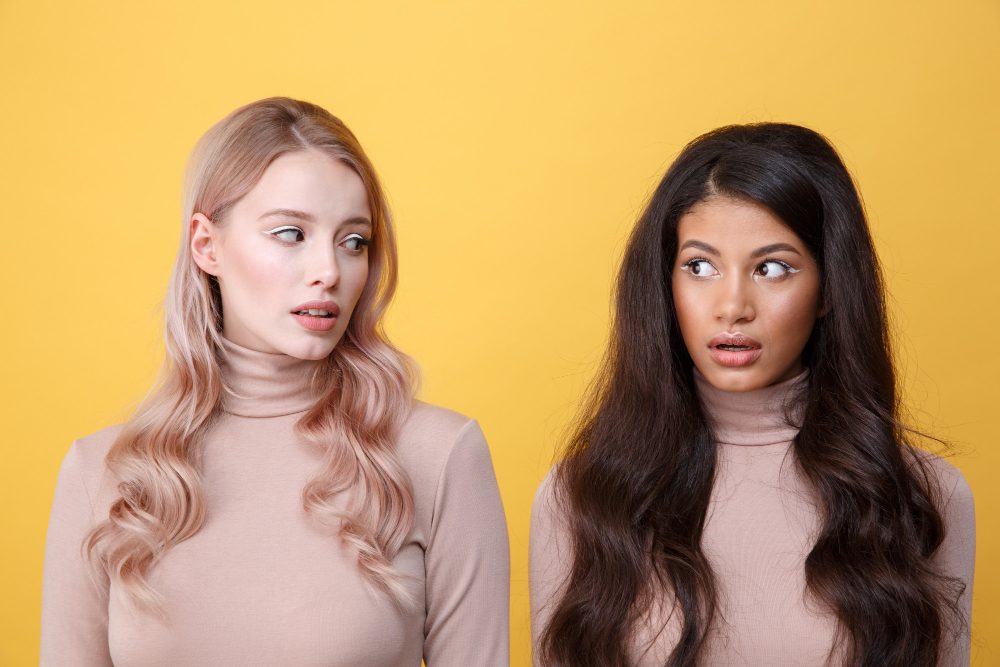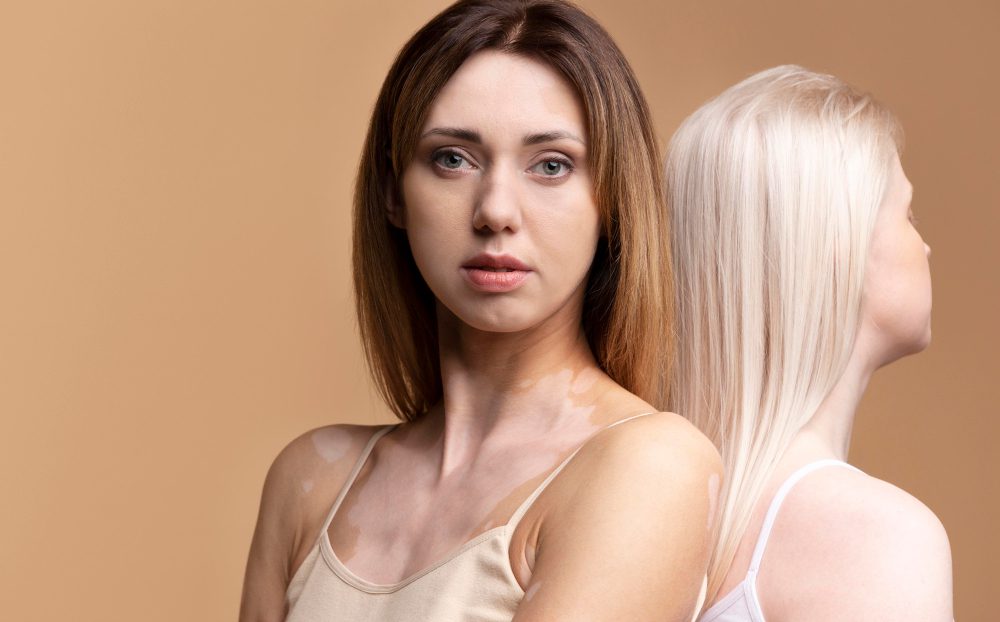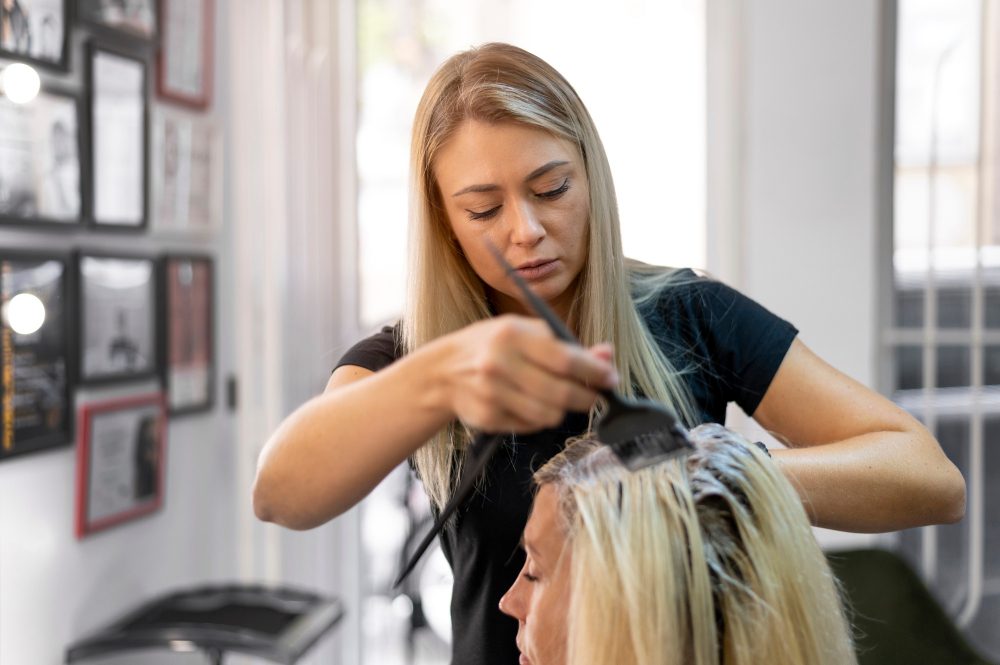Understanding Hair Colour Trends: What’s the Difference Between Highlights, Lowlights & Babylights?
Introduction to Hair Colour Trends
The Evolution of Hair Colour
Hair color trends have evolved significantly over the years, reflecting changes in fashion, culture, and technology. From the bold, vibrant hues of the 1980s to the more natural, sun-kissed looks of the 2000s, hair color has always been a way for individuals to express their personality and style. The evolution of hair color trends is also influenced by advancements in hair dye technology, allowing for more diverse and sophisticated coloring techniques.
Influences on Hair Colour Trends
Several factors influence hair color trends, including celebrity styles, fashion runways, and social media platforms. Celebrities often set the tone for new trends, with their hair transformations quickly becoming popular among the masses. Fashion shows also play a crucial role, as designers often collaborate with hairstylists to create looks that complement their collections. Social media platforms like Instagram and Pinterest have become powerful tools for spreading new hair color ideas, with influencers and hairstylists showcasing their latest creations to a global audience.
Seasonal Changes and Hair Colour
Hair color trends often change with the seasons, with lighter shades being popular in the spring and summer, and darker, richer tones favored in the fall and winter. This seasonal shift is driven by the desire to match hair color with the changing environment and wardrobe choices. For instance, warmer months might inspire sun-kissed highlights, while cooler months might see a rise in deep, chocolatey browns or rich auburns.
The Role of Personalisation
Personalization is a key aspect of modern hair color trends. Individuals are increasingly seeking hair colors that are tailored to their unique features, such as skin tone, eye color, and personal style. This has led to a rise in bespoke coloring techniques, where hairstylists create custom shades and blends to suit each client. The emphasis on personalization reflects a broader trend towards individuality and self-expression in beauty and fashion.
The Impact of Technology
Advancements in hair dye technology have greatly expanded the possibilities for hair color. New formulations offer longer-lasting results, improved color vibrancy, and reduced damage to the hair. Techniques such as balayage, ombre, and color melting have become popular due to their ability to create seamless, natural-looking transitions between shades. These technological advancements have made it easier for individuals to experiment with different colors and styles, contributing to the dynamic nature of hair color trends.
The Basics of Hair Colouring Techniques
Understanding Hair Colour
Hair coloring is a technique used to change the natural color of hair. It can be done for various reasons, including covering gray hair, enhancing natural color, or experimenting with a new look. The process involves the use of chemical compounds capable of altering the hair’s color. Understanding the basics of hair coloring techniques is essential for achieving the desired look while maintaining hair health.
Types of Hair Colouring Techniques
Permanent Hair Colour
Permanent hair color involves a chemical process that changes the hair’s color permanently. This technique uses ammonia and peroxide to open the hair cuticle and deposit color deep into the hair shaft. It is ideal for those looking to make a significant change or cover gray hair, as it provides long-lasting results. However, it requires regular touch-ups to maintain the color as the hair grows.
Semi-Permanent Hair Colour
Semi-permanent hair color is a less invasive option that coats the hair shaft with color without penetrating the cuticle. It typically lasts for about 4 to 6 weeks and gradually fades with each wash. This technique is suitable for those who want to enhance their natural color or try a new shade without a long-term commitment. It is also less damaging to the hair compared to permanent color.
Demi-Permanent Hair Colour
Demi-permanent hair color is a middle ground between permanent and semi-permanent color. It uses a low-volume developer to deposit color onto the hair, providing a more subtle and natural look. This technique lasts longer than semi-permanent color, usually around 6 to 8 weeks, and is often used to blend gray hair or enhance natural tones.
Temporary Hair Colour
Temporary hair colour is a non-permanent option that sits on the surface of the hair and washes out after one or two shampoos. It is perfect for those who want to experiment with bold colors or special effects for a short period. Temporary color is available in various forms, such as sprays, gels, and rinses, and does not require a developer or ammonia.
Application Techniques
Highlights
Highlights involve lightening specific sections of the hair to create contrast and dimension. This technique can be achieved using foils or a cap, and the lightened strands are usually a few shades lighter than the natural color. Highlights can be customized to achieve various looks, from subtle sun-kissed effects to bold, dramatic contrasts.
Lowlights
Lowlights are the opposite of highlights, involving the darkening of specific sections of the hair. This technique adds depth and richness to the hair by incorporating darker shades. Lowlights are often used to create a more natural look, especially for those with lighter hair colors, and can help blend gray hair.
Babylights
Babylights are a delicate highlighting technique that mimics the natural, sun-kissed highlights seen in children’s hair. This method involves applying very fine, subtle highlights throughout the hair to create a soft, natural look. Babylights are ideal for those seeking a low-maintenance, natural appearance with a touch of brightness.
Choosing the Right Technique
Selecting the appropriate hair coloring technique depends on various factors, including the desired look, hair type, and maintenance level. It’s essential to consider the condition of the hair and consult with a professional stylist to determine the best approach. Each technique offers unique benefits and can be tailored to suit individual preferences and lifestyle needs.
Highlights: Definition and Techniques
Definition of Highlights
Highlights are a popular hair coloring technique that involves lightening specific sections of the hair to create contrast and dimension. This method is used to mimic the natural effects of sunlight on hair, adding brightness and depth. Highlights can be applied to any hair color and are often used to enhance the natural base color, create a sun-kissed look, or add a touch of glamour. The process involves using a lightening agent, such as bleach or a high-lift color, to lift the hair’s natural pigment and achieve the desired shade.
Techniques for Applying Highlights
Foil Highlights
Foil highlights are one of the most traditional and widely used techniques. In this method, sections of hair are wrapped in foil after applying the lightening agent. The foil helps to isolate the hair being highlighted, allowing for precise application and preventing the lightener from bleeding onto the surrounding hair. This technique is ideal for achieving a more uniform and controlled look, and it allows for a variety of effects, from subtle to dramatic.
Balayage
Balayage is a freehand technique where the colorist paints the lightener directly onto the hair without using foils. This method creates a more natural, sun-kissed effect with softer, less noticeable regrowth lines. Balayage is known for its ability to create a seamless blend with the natural hair color, making it a popular choice for those seeking a low-maintenance look. The technique allows for a customized application, as the colorist can strategically place highlights to enhance the client’s features and hair movement.
Ombre
Ombre is a technique that involves a gradual transition from a darker base color at the roots to a lighter shade at the ends. While not a traditional highlighting method, it incorporates the use of highlights to achieve the gradient effect. Ombre can be subtle or bold, depending on the contrast between the base and the highlighted ends. This technique is often chosen for its striking visual impact and the ability to maintain a natural root color, reducing the need for frequent touch-ups.
Babylights
Babylights are ultra-fine highlights that mimic the natural, sun-kissed highlights seen in children’s hair. This technique involves taking very small sections of hair and applying a lightening agent to create a soft, subtle effect. Babylights are perfect for adding a touch of brightness and dimension without a drastic change. They blend seamlessly with the natural hair color, making them an excellent choice for those who want a delicate, understated look.
Considerations for Choosing Highlight Techniques
When selecting a highlighting technique, several factors should be considered, including the client’s natural hair color, texture, and desired outcome. The maintenance level is also an important consideration, as some techniques require more frequent touch-ups than others. Consulting with a professional colorist can help determine the best approach to achieve the desired look while maintaining the health and integrity of the hair.
Lowlights: Definition and Techniques
Definition of Lowlights
Lowlights are a hair coloring technique used to add depth and dimension to hair by incorporating darker shades. Unlike highlights, which lighten sections of the hair, lowlights involve applying colors that are a few shades darker than the natural or base hair color. This technique is particularly effective for creating a more natural, multi-dimensional look, as it mimics the natural variations in hair color that occur with exposure to sunlight and other environmental factors.
Lowlights can be applied to any hair color, from blonde to brunette to red, and are often used to tone down overly bright highlights or to add richness and depth to a single-tone hair color. They are a versatile option for those looking to enhance their hair’s natural beauty without making a drastic change.
Techniques for Applying Lowlights
Foil Technique
The foil technique is a popular method for applying lowlights, especially for those with longer hair. In this technique, sections of hair are wrapped in foil after the darker dye is applied. This helps to isolate the lowlighted sections from the rest of the hair, preventing the darker color from bleeding onto the lighter strands. The foil also helps to retain heat, which can enhance the color development process.
Balayage Technique
Balayage, a French word meaning “to sweep,” is a freehand technique where the colorist paints the lowlights onto the hair without using foils. This method allows for a more natural, sun-kissed look, as the color is applied in a way that mimics how the sun would naturally lighten and darken the hair. Balayage is ideal for those seeking a subtle, blended effect.
Cap Technique
The cap technique involves pulling strands of hair through a perforated cap and applying the lowlight color to these sections. This method is less commonly used today but can be effective for shorter hair or for those looking for a more uniform application of lowlights. The cap technique allows for precise placement of the lowlights, ensuring even distribution throughout the hair.
Color Melting
Color melting is a technique that involves blending the lowlights seamlessly with the base color and any existing highlights. This method creates a smooth transition between different shades, resulting in a natural, cohesive look. Color melting is particularly effective for those with multiple tones in their hair, as it helps to unify the overall color palette.
Choosing the Right Shade for Lowlights
When selecting a shade for lowlights, it’s important to consider the natural hair color and the desired end result. The chosen shade should be a few tones darker than the base color to ensure a noticeable yet subtle contrast. For example, brunettes might opt for rich chocolate or chestnut tones, while blondes might choose caramel or honey shades. The goal is to enhance the hair’s natural depth and dimension without creating harsh lines or stark contrasts.
Maintenance and Care for Lowlights
Lowlights generally require less maintenance than highlights, as the darker shades tend to blend more naturally with the hair as it grows out. However, to keep the color looking fresh and vibrant, it’s important to use color-safe shampoos and conditioners. Regular touch-ups may be needed every 6-8 weeks, depending on the rate of hair growth and the contrast between the lowlights and the natural hair color.
Babylights: Definition and Techniques
Definition of Babylights
Babylights are a subtle hair coloring technique designed to mimic the natural, sun-kissed highlights often seen in children’s hair. This method involves applying very fine, delicate highlights throughout the hair to create a soft, natural-looking effect. The goal of babylights is to add dimension and depth to the hair without creating a stark contrast between the highlighted strands and the base color. This technique is ideal for those seeking a low-maintenance, natural appearance that enhances their hair’s natural beauty.
Techniques for Achieving Babylights
Sectioning and Preparation
To achieve babylights, the hair is first sectioned into very small, fine sections. This meticulous sectioning is crucial for creating the subtle, blended effect that defines babylights. The stylist will typically use a tail comb to separate the hair into these fine sections, ensuring that each section is uniform in size.
Application Process
The application process for babylights involves using a lightener or hair dye that is only a few shades lighter than the natural hair color. The stylist will apply the color to the selected sections using a fine-tooth comb or a small brush, ensuring that the color is evenly distributed. The key to successful babylights is the precision of the application, as the highlights should be very fine and closely spaced to achieve the desired natural look.
Foiling or Freehand Technique
Depending on the desired outcome and the stylist’s preference, babylights can be applied using either a foiling technique or a freehand technique. Foiling involves wrapping the colored sections in foil to isolate them from the rest of the hair, allowing for more controlled processing. The freehand technique, on the other hand, involves painting the color directly onto the hair without the use of foils, which can create a softer, more blended effect.
Processing and Finishing
Once the color is applied, it is left to process for a specific amount of time, depending on the desired level of lightness and the natural hair color. After processing, the hair is thoroughly rinsed and conditioned to ensure that it remains healthy and vibrant. The final step involves styling the hair to enhance the natural-looking effect of the babylights, often using a blow dryer or styling tools to add volume and movement.
Comparing Highlights, Lowlights, and Babylights
Definition and Purpose
Highlights
Highlights involve lightening sections of the hair to create contrast and dimension. The primary purpose is to mimic the natural lightening effects of the sun, adding brightness and depth to the hair. They are typically lighter than the base color and can range from subtle to bold, depending on the desired look.
Lowlights
Lowlights are the opposite of highlights, involving the darkening of certain sections of the hair. The purpose is to add depth and richness, often used to create a more natural, multi-dimensional look. Lowlights can help tone down overly bright highlights or add interest to a single-tone color.
Babylights
Babylights are ultra-fine highlights that mimic the natural, sun-kissed highlights seen in children’s hair. The purpose is to create a soft, natural look with subtle brightness. Babylights are ideal for those seeking a low-maintenance, natural appearance.
Technique and Application
Highlights
The technique for applying highlights typically involves sectioning the hair and applying a lightening agent to the selected strands. Foils or a balayage technique can be used to isolate the hair and achieve the desired level of lift. The application can vary in thickness and placement, allowing for a range of effects from bold streaks to soft, blended looks.
Lowlights
Lowlights are applied using a similar technique to highlights but with a darker color. The stylist selects strands of hair to darken, often using foils to separate them from the rest of the hair. This technique can be used to add depth and contrast, especially in hair that has been overly lightened.
Babylights
Babylights require a meticulous technique, involving the selection of very fine sections of hair to lighten. The application is often done using foils to ensure precision and control. The result is a subtle, natural effect that blends seamlessly with the base color.
Color Choices
Highlights
Color choices for highlights can vary widely, from natural shades like blonde and caramel to more adventurous colors like pink or blue. The choice depends on the desired effect and the individual’s base color.
Lowlights
Lowlights typically involve shades that are one to two levels darker than the base color. Common choices include rich browns, deep reds, and dark blondes, which add depth without overpowering the natural color.
Babylights
Babylights usually involve shades that are only slightly lighter than the base color. The goal is to achieve a natural, sun-kissed effect, so the color choice is often subtle and closely matches the natural highlights found in the hair.
Maintenance and Upkeep
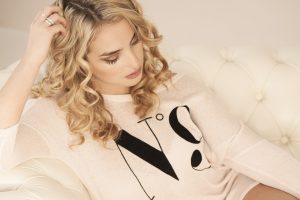 Highlights
Highlights
Maintenance for highlights can vary depending on the contrast between the highlights and the base color. High-contrast highlights may require more frequent touch-ups to maintain the look, while more subtle highlights can grow out more naturally.
Lowlights
Lowlights generally require less maintenance than highlights, as they blend more seamlessly with the natural hair color. Touch-ups are needed less frequently, making them a lower-maintenance option for adding dimension.
Babylights
Babylights are low-maintenance due to their subtlety and fine application. They grow out naturally, requiring fewer touch-ups and allowing for a more extended period between salon visits.
Choosing the Right Technique for Your Hair
Understanding Your Hair Type
Texture and Thickness
The texture and thickness of your hair play a crucial role in determining which coloring technique will work best. Fine hair may benefit from babylights, as they can add dimension without overwhelming the hair. On the other hand, thicker hair can handle more dramatic highlights or lowlights, which can create a more pronounced effect.
Natural Hair Colour
Your natural hair colour is the foundation for any colouring technique. If you have a lighter base, highlights can create a sun-kissed look, while lowlights can add depth to darker hair. Babylights are versatile and can be used on any natural color to enhance subtlety.
Desired Look and Maintenance
Subtle vs. Dramatic
Consider whether you want a subtle change or a dramatic transformation. Babylights offer a more natural, understated look, perfect for those who prefer minimal change. Highlights can range from subtle to bold, depending on the contrast with your natural color. Lowlights are ideal for adding depth and richness, especially in darker hair.
Maintenance Level
Different techniques require varying levels of maintenance. Babylights grow out seamlessly, making them a low-maintenance option. Highlights may require more frequent touch-ups to maintain their brightness, while lowlights can often last longer between salon visits.
Skin Tone and Personal Style
 Complementing Skin Tone
Complementing Skin Tone
Choosing a technique that complements your skin tone can enhance your overall appearance. Warmer skin tones may benefit from golden or caramel highlights, while cooler tones might prefer ash or platinum shades. Lowlights can be tailored to match your undertones, providing a harmonious look.
Reflecting Personal Style
Your hair is an extension of your personal style. If you prefer a classic, timeless look, subtle highlights or babylights might be the way to go. For those who enjoy experimenting with trends, bold highlights or contrasting lowlights can make a statement.
Consulting with a Professional
Expert Advice
A professional colourist can assess your hair type, natural color, and desired outcome to recommend the best technique. They can also provide insight into the latest trends and how they can be adapted to suit your individual needs.
Customisation
A skilled colorist can customise any technique to create a unique look tailored to you. Whether it’s blending different techniques or adjusting the color placement, professional expertise ensures a personalized result.
Conclusion: Embracing Hair Colour Trends
Understanding Personal Style and Preferences
When it comes to embracing hair color trends, understanding your personal style and preferences is crucial. Hair color is a form of self-expression, and choosing the right trend can enhance your natural beauty and reflect your personality. Consider what colors make you feel confident and align with your lifestyle. Whether you prefer subtle changes or bold transformations, knowing what you love will guide you in selecting the right trend.
Consulting with a Professional Stylist
Consulting with a professional stylist is an essential step in embracing hair color trends. Stylists have the expertise to recommend colors and techniques that complement your skin tone, hair type, and personal style. They can provide insights into the latest trends and help you achieve the look you desire while maintaining the health of your hair. A professional consultation ensures that the chosen trend is executed flawlessly and suits your individual needs.
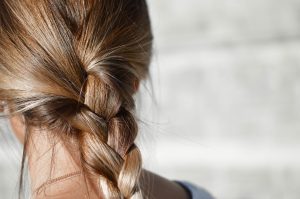 Experimenting with Trends
Experimenting with Trends
Experimenting with hair color trends can be an exciting journey. Trying out different techniques like highlights, lowlights, and babylights allows you to discover new looks and find what works best for you. It’s an opportunity to step out of your comfort zone and explore various styles. Whether you opt for a subtle change or a dramatic makeover, experimenting with trends can lead to a fresh and rejuvenated appearance.
Maintaining Hair Health
While embracing hair color trends, maintaining hair health should be a priority. Coloring can sometimes lead to damage, so it’s important to use quality products and follow a proper hair care routine. Regular conditioning treatments, minimizing heat styling, and using color-safe shampoos can help preserve the vibrancy of your color and the integrity of your hair. Healthy hair not only looks better but also holds color more effectively.
Staying Updated with Evolving Trends
Hair color trends are constantly evolving, and staying updated can inspire new looks and ideas. Following fashion shows, celebrity styles, and social media influencers can provide insights into emerging trends. Being aware of what’s popular allows you to make informed decisions about your next hair color adventure. Embracing change and being open to new trends can keep your style fresh and exciting.
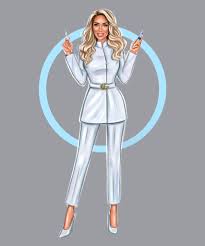
Sarah Partridge, the visionary behind Boss Queen Aesthetics, has carved a distinctive niche in the beauty and aesthetics industry with her creative approach and dedication to client satisfaction. Based in Tamworth, UK, Sarah specialises in a range of beauty services, from dermal fillers and Anti-Wrinkle to bridal hair and makeup, embodying a versatile aesthetic that meets the needs of a diverse clientele.
